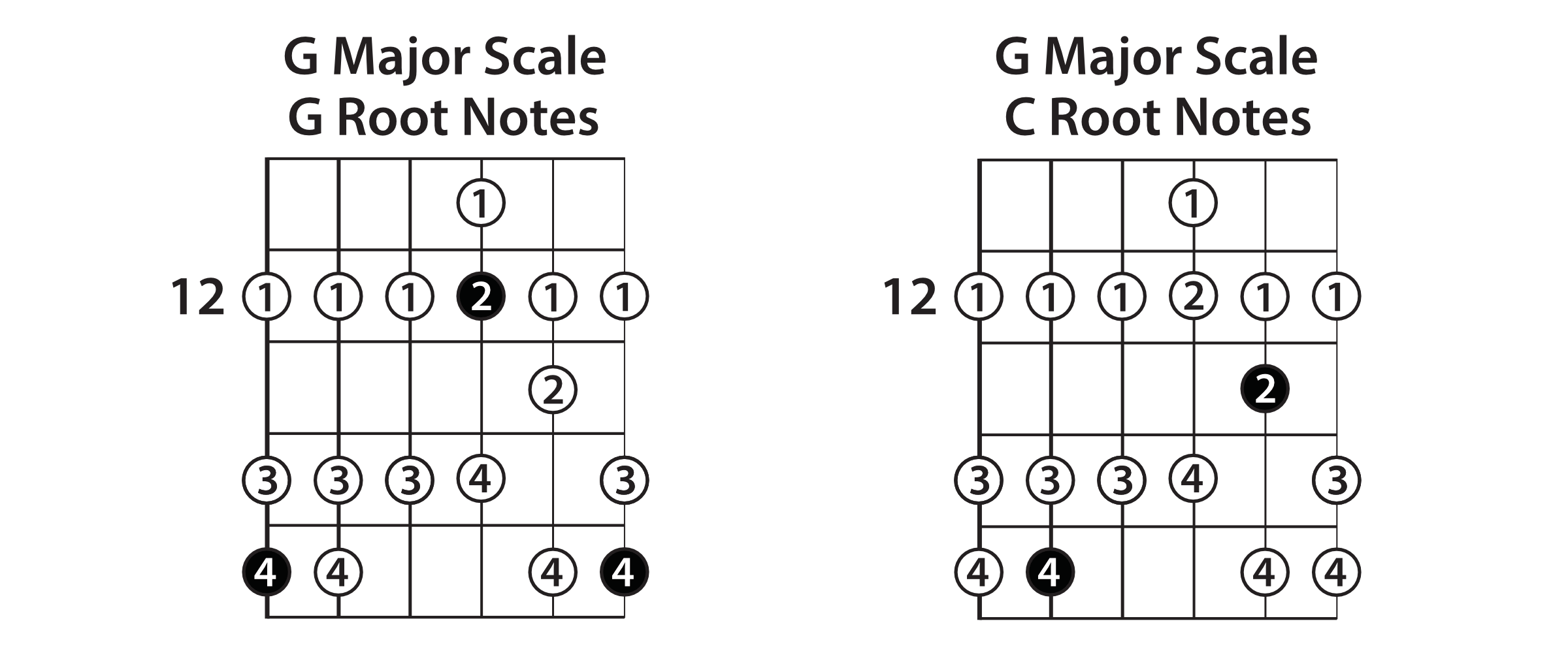What do all the best lead guitar players have in common? It’s not that they play the right scales over the right chords and play them fast; it’s that their lead lines are melodic. Think of three or four of your favorite guitar solos by different players. There’s a good chance that you can hum or sing part of the solos. Those memorable melodic phrases that get stuck in your head are what make those solos – and guitar players – stand out from all the others.
So, how do you bridge the gap from playing scales to playing melodic lines? There are several different approaches. Let’s look at a couple of them, keeping in mind that they all start from chords and scales.
Find the G major scale at the 12th fret with your index finger at the 12th fret. (See the G major scale illustration.) Find the G notes in the scale. These are the root notes when a G chord is played.

In a I – IV progression, C is the IV chord. Find the C notes that will be the root notes for the IV chord. (See the G root notes and C root notes illustration.)

Try starting lead lines with the root notes. Over a I – IV progression, get comfortable switching from the G to the C root notes for the beginning of lead guitar phrases, even if you are just playing the scale.

The next step is to work with additional chord progressions using the appropriate root notes. Try a I – IV – V progression or a I – VI – IV – V. You will need to find the D notes and E notes within the G major scale to use as roots when a D, D7 or E minor chord is played. Get comfortable with this so you can quickly match the root notes with their chord.
Go back to your list of favorite guitar solos or songs. Find a simple riff or phrase and learn it on your guitar. The illustration shows the main lick from John Mayer’s “Gravity.”


Figure out which major scale the notes belong to. In this case, they are part of the G Major scale.

While you are at it, find the root notes in the lick. Is the lick played over one chord or multiple chords so that there is more than one root note?
Do this with several different guitar licks or vocal lines. After learning several of them and identifying the root notes and scales, this will get much easier. You are starting the process of thinking in melodic lines rather than scales. These licks are tied to the scales, but the melody is the most important part. You will find that humming or singing along as you play the line helps to develop your musical ear and helps your fingers learn faster!
Remember that these exercises do not mean you should short change your time working on guitar scales. Every player needs to know the scales and when to play them. Knowing the basics is what frees you up to be creative.
At some point, though, you will need to break away from running up and down scales. There are many steps on the path to becoming a creative lead guitar player. Learning melodic riffs – hearing them and then playing them – is one of the first and most important. Don’t underestimate the value of a simple melodic phrase. Train your ears to hear them and your fingers to find them.
Are you looking for more lead guitar lessons and relevant jam-tracks? Guitareo is Nate Savage’s step-by-step video training system. It has some great songs for lead guitar and it also covers many other important styles of music including rock, country, fingerstyle, metal, classical, bluegrass, jazz, and more. Best of all it includes a huge library of original jam-tracks so you can apply everything to music.